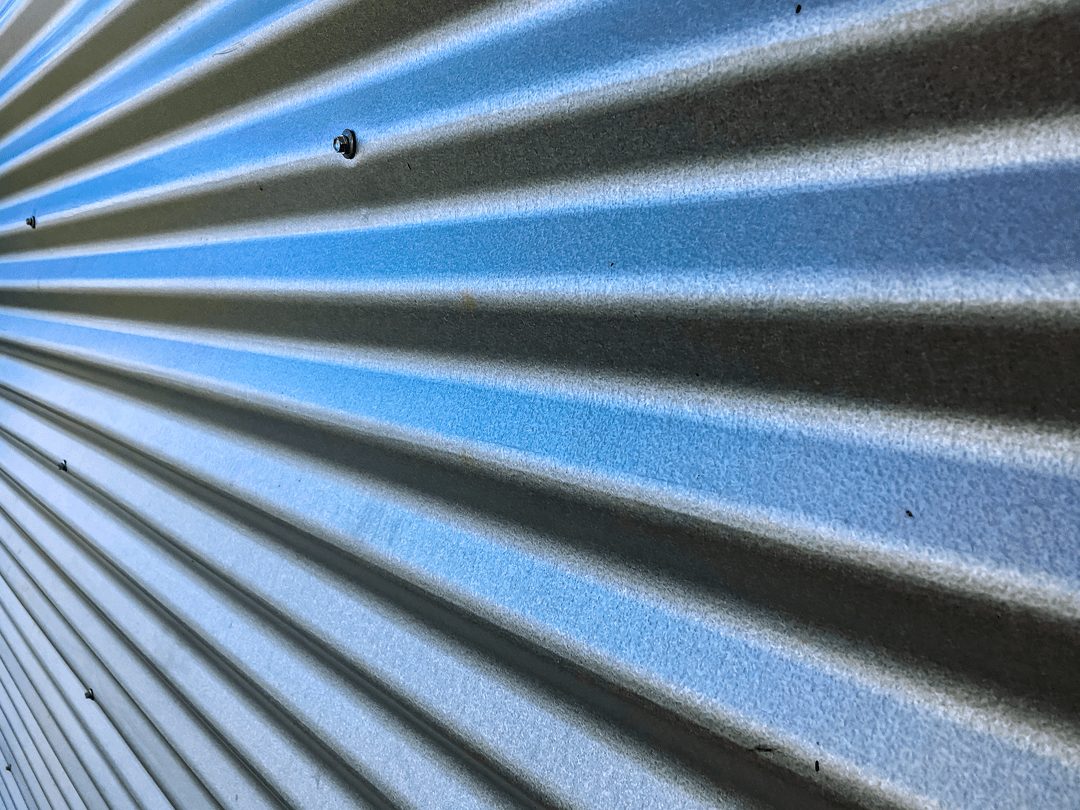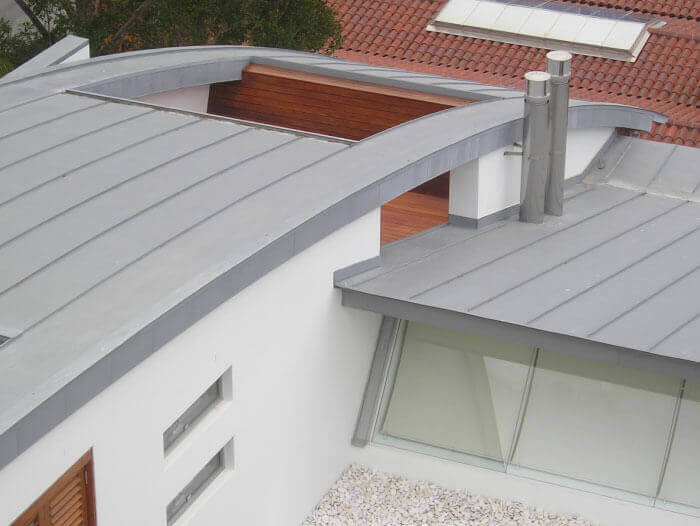Metal Roof Types and the Advantages of Each Type
Rain Heads Custom Made Shipped Free Australia Wide – Click Here >
Dambuster Rain Heads Shipped Free Australia Wide – Click Here >
Commercial Industrial Roof Vents 300mm-950mm – Click Here >
Eco-Friendly Roofing Insulation Shipped Free – Click Here >
Gutter Sumps Shipped Free Australia Wide – Click Here >
Choosing the Right Metal Roof Type
Picking out the correct roof style for your house is like selecting wrapping paper for a gift. There are many roof types to choose from. However, not all roof styles may suit your topography, home or your style. As such, it is important to conduct ample research before carrying out this crucial step.
A good roof serves several purposes. It provides support to the entire structure of the house. It also provides protection from environmental elements such as rain, snow and even extreme heat. An ideal roof should be aesthetically pleasing, stable and functional at the same time.
Here are factors to consider when selecting a roof.
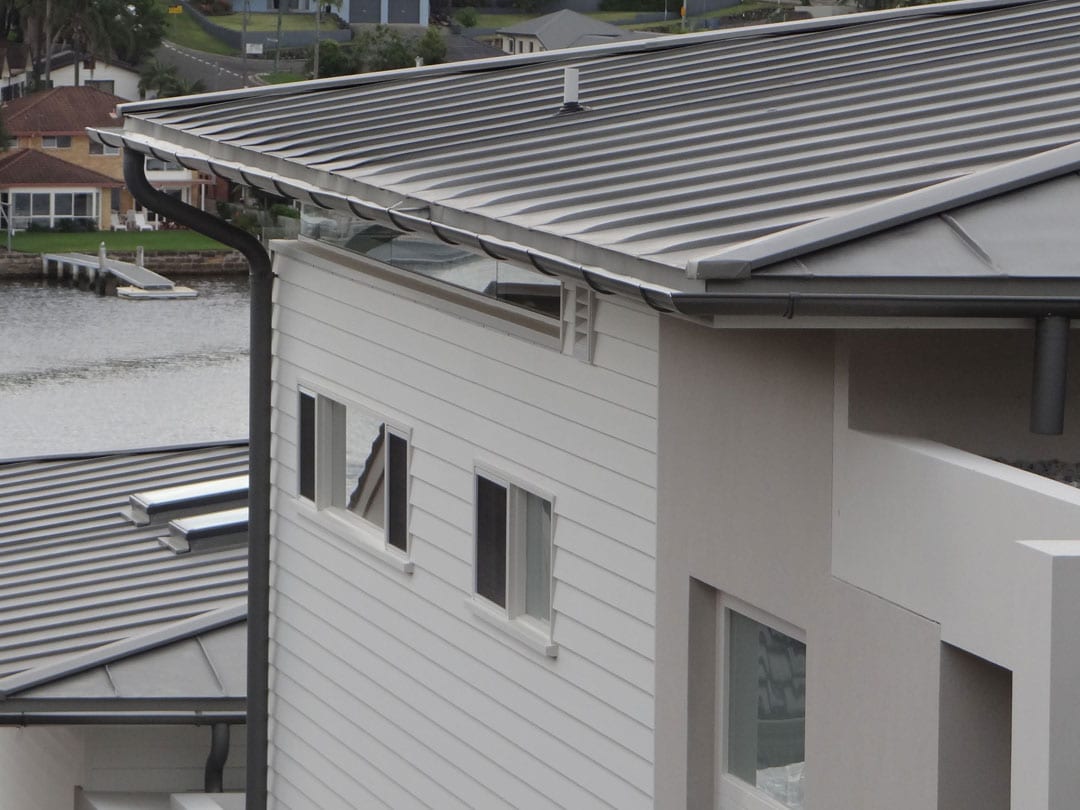
Factors to Consider Before Choosing Roof Types
When it comes to selecting a roof for your home, the most important factor is topography. Australia has a diverse topography. Some areas have dense forests, deserts, outback ranges or are located next to the coast. The roof designs vary according to the location. This is because topography also determines the roof type material.
The second factor to consider is the architectural style of the house or building. Depending on where you live, there are various building codes that your hoe must abide by. There are also council and community requirements which your house must respect. This is a crucial step which may help you avoid unnecessary penalties or fines.
Finally, it is important to consider your energy expectations. Do you plan to add on solar panels and other energy-efficient panels? The underlayments, design and general structure of the roof may affect your efforts to become energy efficient.
Below are some of the rooftop types available in Australia.
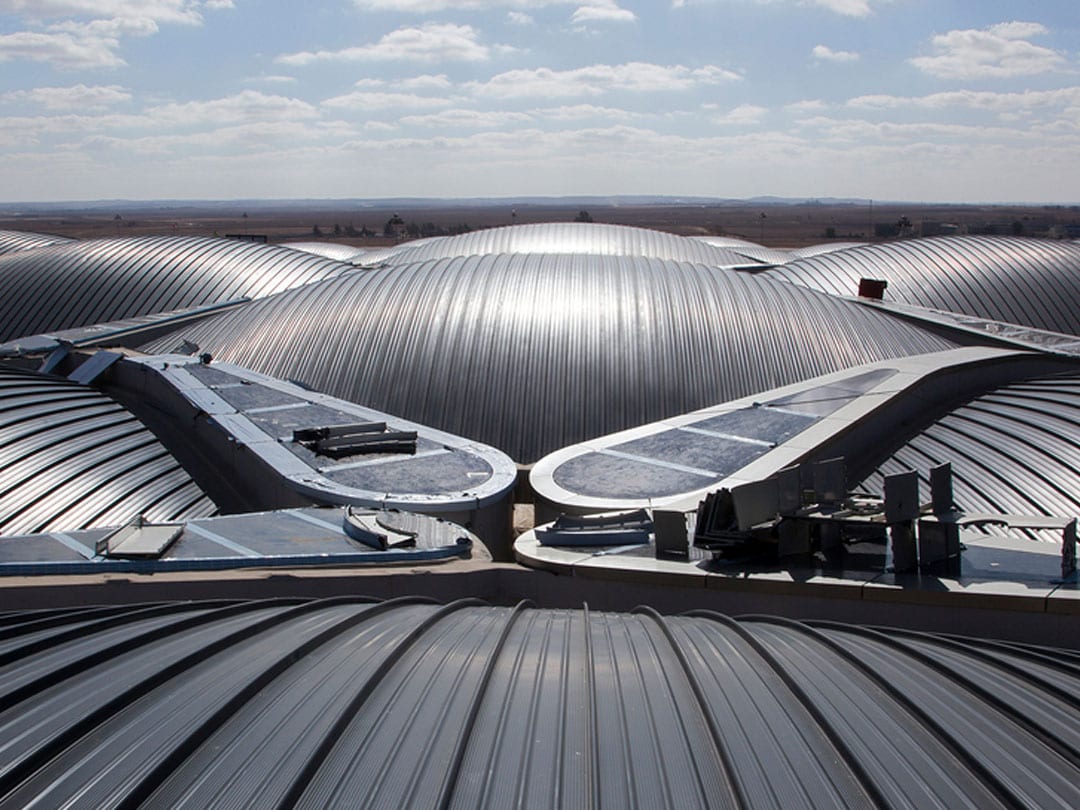
Top 6 Australian Roof Types
1. Flat Roof
This is the most common type of roof. It is modern and blends in perfectly with contemporary house designs. They are economical, safe, stable and relatively easy to build. These roof types suit dry, arid climates. The flat nature of the roof means that it can be used as a rooftop garden or lounge area.
The material used to build flat roofs varies depending on a few factors. In areas that receive plenty of rain, the roof may become flooded and soaked. This may result in a leaking roof. This roof type does not suit very cold areas either. Places that receive snow or ice could result in a frozen roof which could damage the bricks or mortar used to construct the roof.
Flat roofs are ideal for commercial buildings, office complexes and even apartment blocks. However, because of the nature of this roof type, they require high maintenance. The flat roof tends to hold rainwater and debris if they are not cleaned properly and regularly. Another major disadvantage of this roof type is constant repairs. It is the house owner’s responsibility to install water seals in order to prevent leakage.
Advantages
Flat roofs have several advantages. Firstly, they provide extra, usable space. The roof can be converted into a garden, rooftop patio or lounge area. They provide nice entertainment spaces, especially if there is a nice view to boot.
Flat roofs are cost-effective. This is because they require fewer materials to install and therefore, less manpower. Also, it only takes a day or so to fully install an entire flat roof. These roof types do not require rafters or trusses. This reduces the amount of labour required for installation significantly.
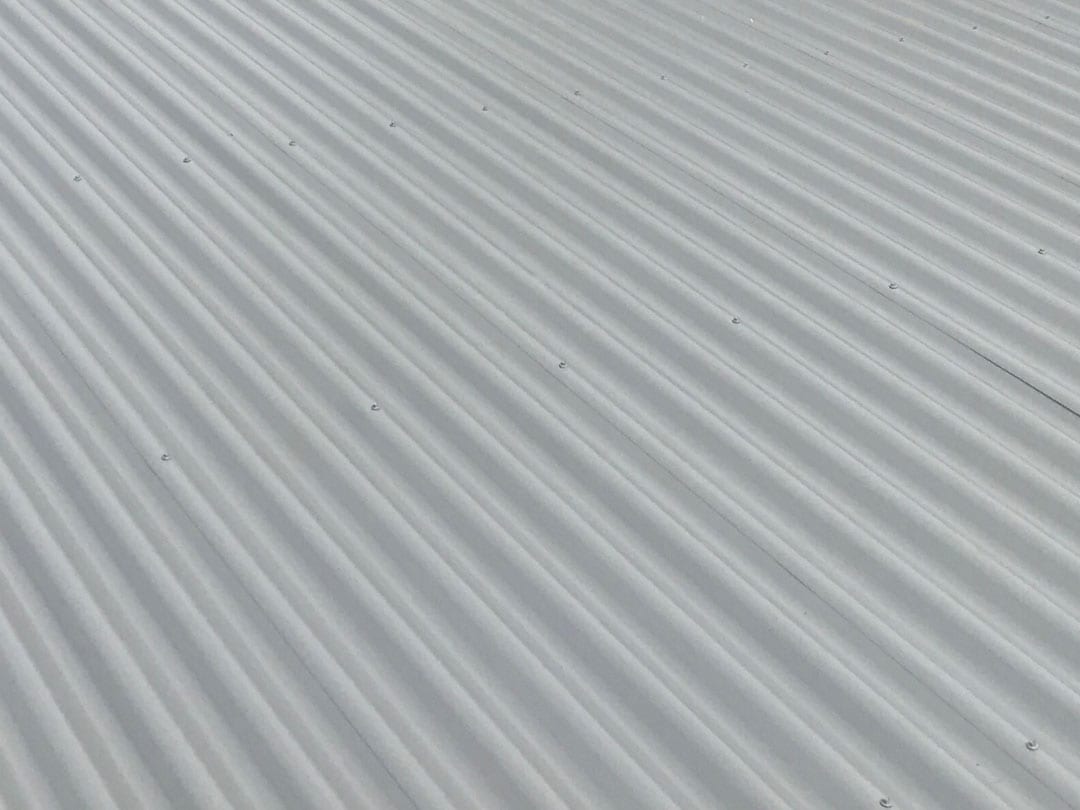
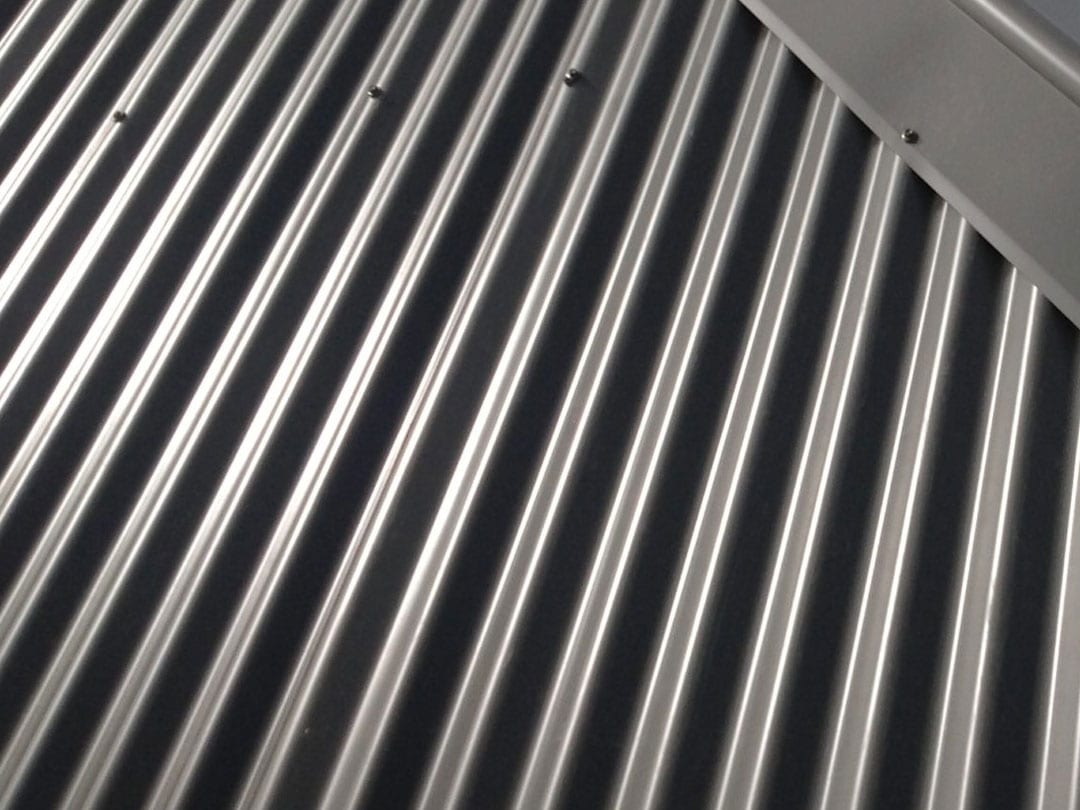
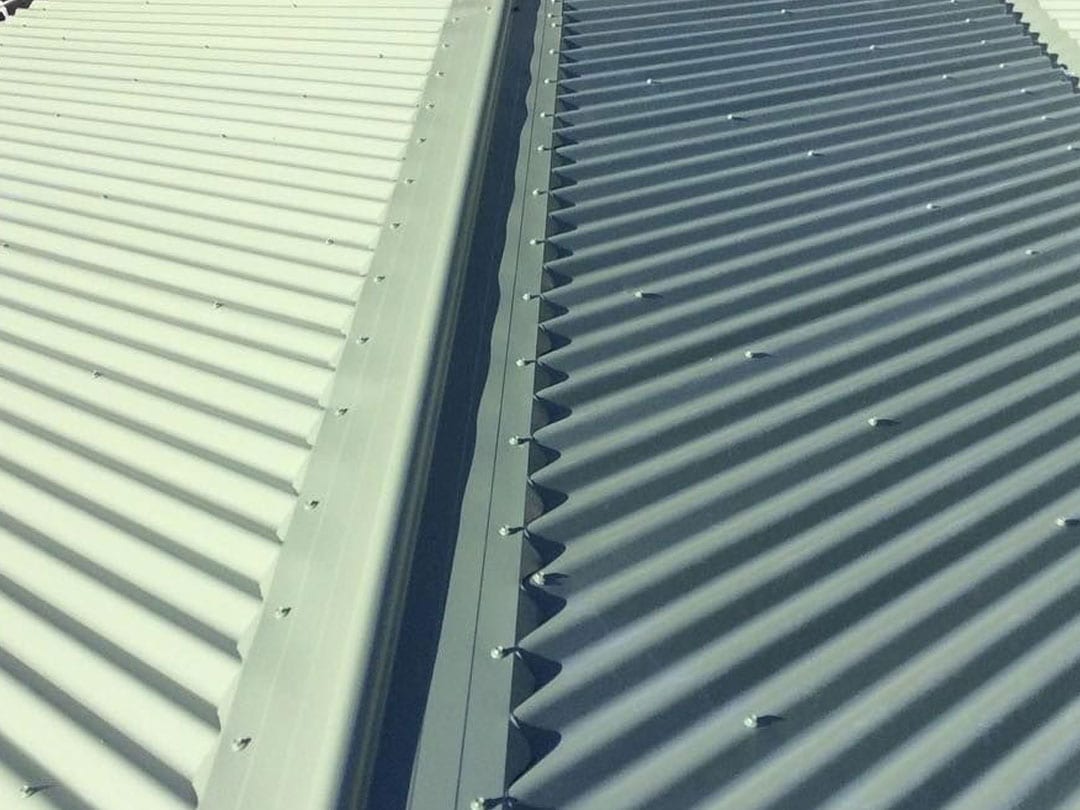
2. Skillion Roof
Skillion roofs are almost similar to flat roof types, only that one side of the roof is sloped off at an angle. They are designed to allow run-off for rainwater and are ideal for areas where catching rainwater may be a priority. They are also known as �shed roof’.
They are cheap and easy to install. They also require very little labour and can be installed very fast. There are many variations of the skillion roof. The butterfly version has two skillions meeting at an angle, usually at the centre of the roof. Other skillion roof versions include oval and circular designs.
Due to the design of these types of roof, they often have a metallic finish. They are not tightly sealed and lack rubber skins or membranes to allow for water drainage. These roofs have an industrial aesthetic to them. They do not have roof tiles or other traditionally decorative roof finishes.
Skillion roofs are the best for installing solar panels as they have a large surface area. The major downside of this roof type is that it may result in a low ceiling if the slope of the roof is too steep.
Advantages
Skillion roofs have several advantages. Firstly, this type is relatively cheap to install when compared to other roof types. They are simple to construct and can be installed quickly with minimal manpower.
Another advantage is that skillion roofs are ideal for extensions. This roof can easily be expanded during home renovations. You can easily add on a garage or even an extra roof.
The greatest advantage of skillion roofs is their drainage capability. These roofs were specifically designed for maximum water run-off. Because of the angle of the roof, it is easy to collect rainwater if need be.
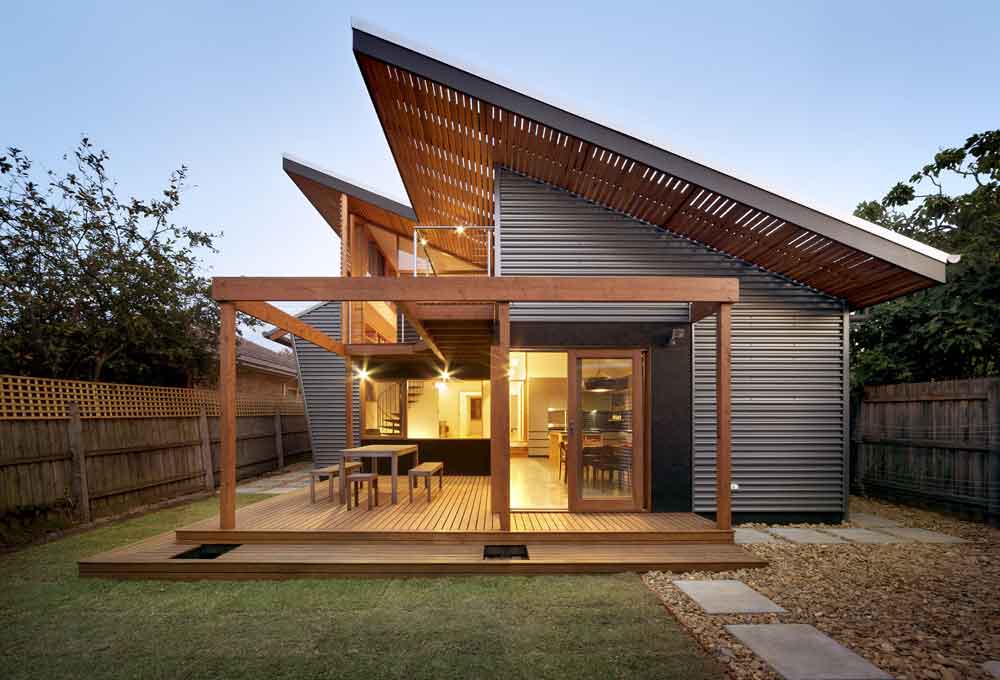
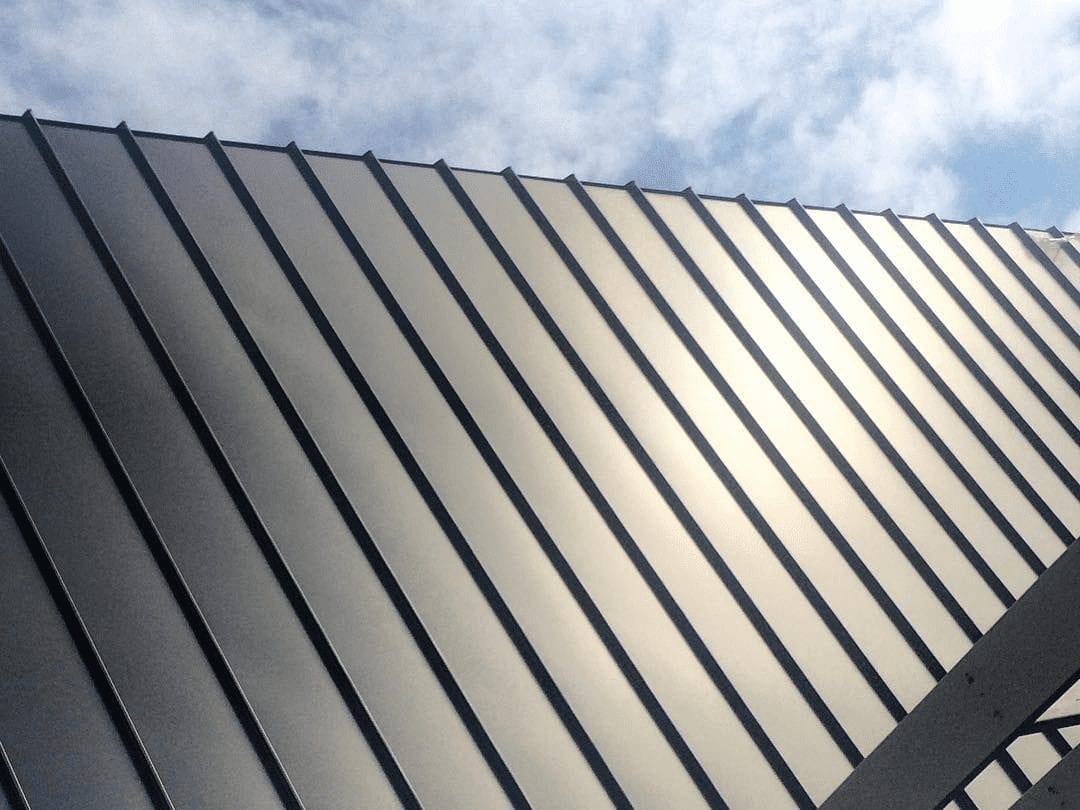

3. Butterfly Roof
This type of roof has gained rapid popularity in recent years. They have a sleek aesthetic that appeals to many people. These types of roof are also suitable for a variety of climates. This roof consists of two skillions placed side by side and joined by a box gutter running down the middle.
Butterfly roofs are expensive. This is due to the fact that they are complicated and require a lot of manpower to install. They are also costly to maintain.
The most interesting thing about this roof type is the striking V-shape silhouette it creates. They are more appealing than traditional roof types. This design was influenced by mid-century French architecture. This design also solves the water run-off issue. The sloping design means that run-off gathers at the middle and is passed out through the box gutter at the middle.
Butterfly roofs appeal to people as the tall outer angles allow for larger windows. They also create very tall ceilings which greatly appeals to modern décor. Larger windows also means more natural light which is a win.
Advantages
Butterfly roofs have several environmental benefits. For starters, they are perfect for drought-prone areas due to the box gutter down the middle. Households can easily direct and collect rainwater. This also eliminates the need for other roof structures such as gutters.
The slanted skillions are ideal for solar panels. Moreover, the taller outer edges allow for larger windows or clerestory windows for high ceilings. This translates into ample natural light.
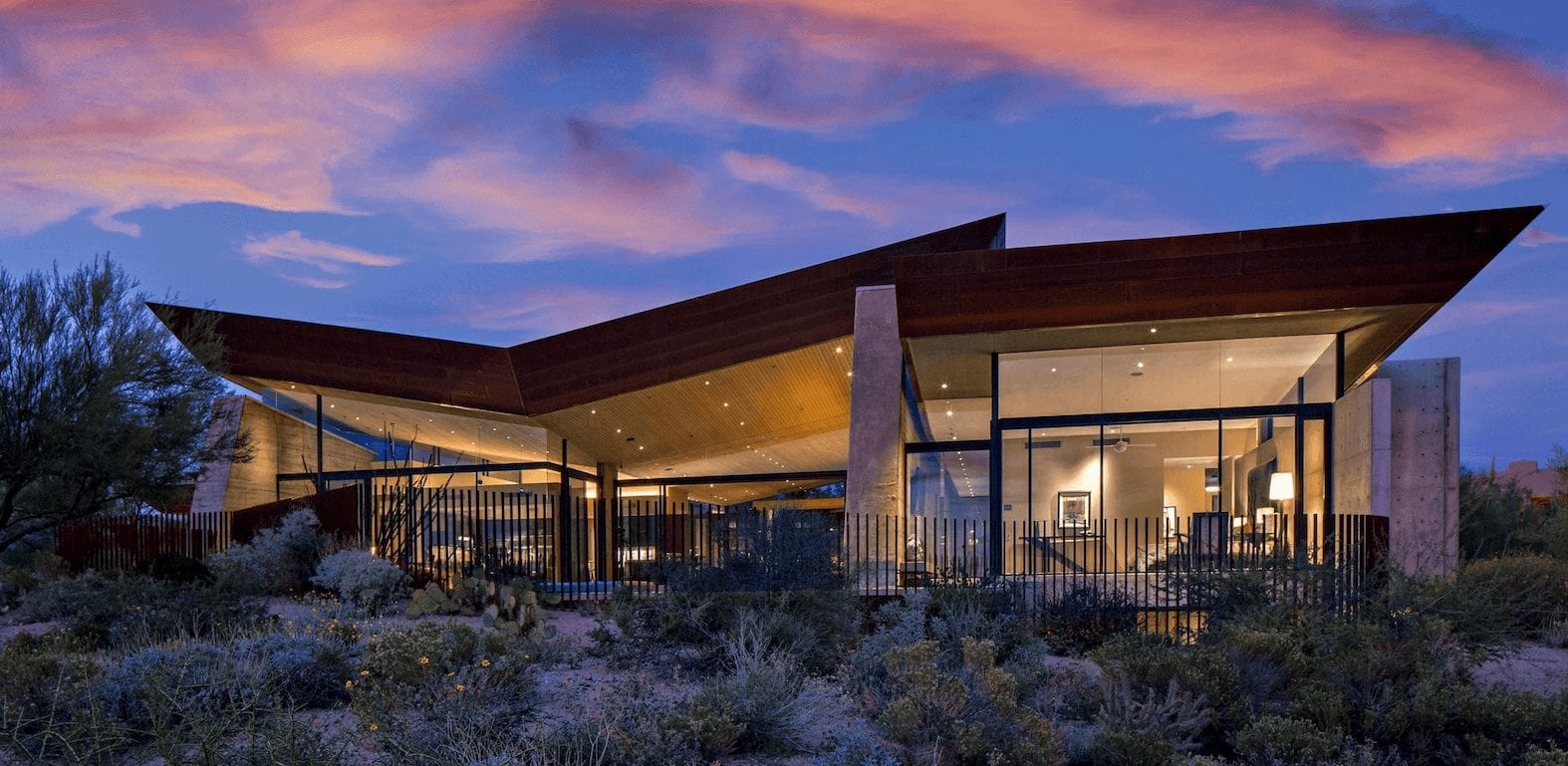
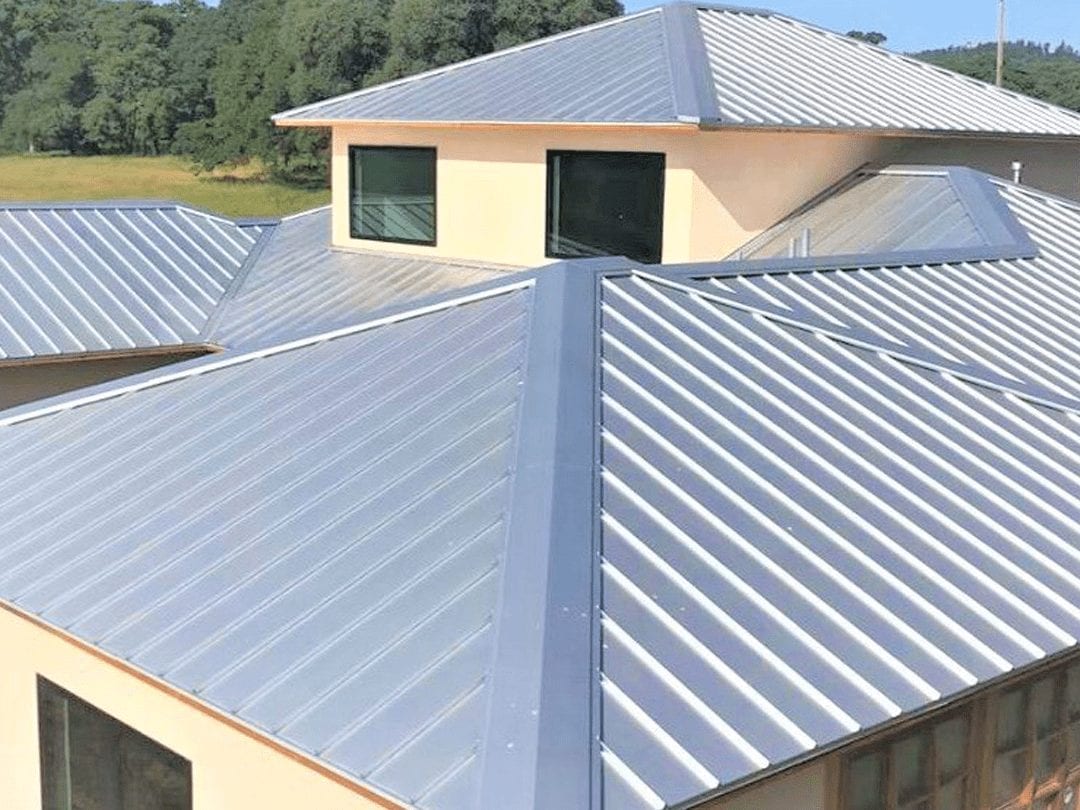
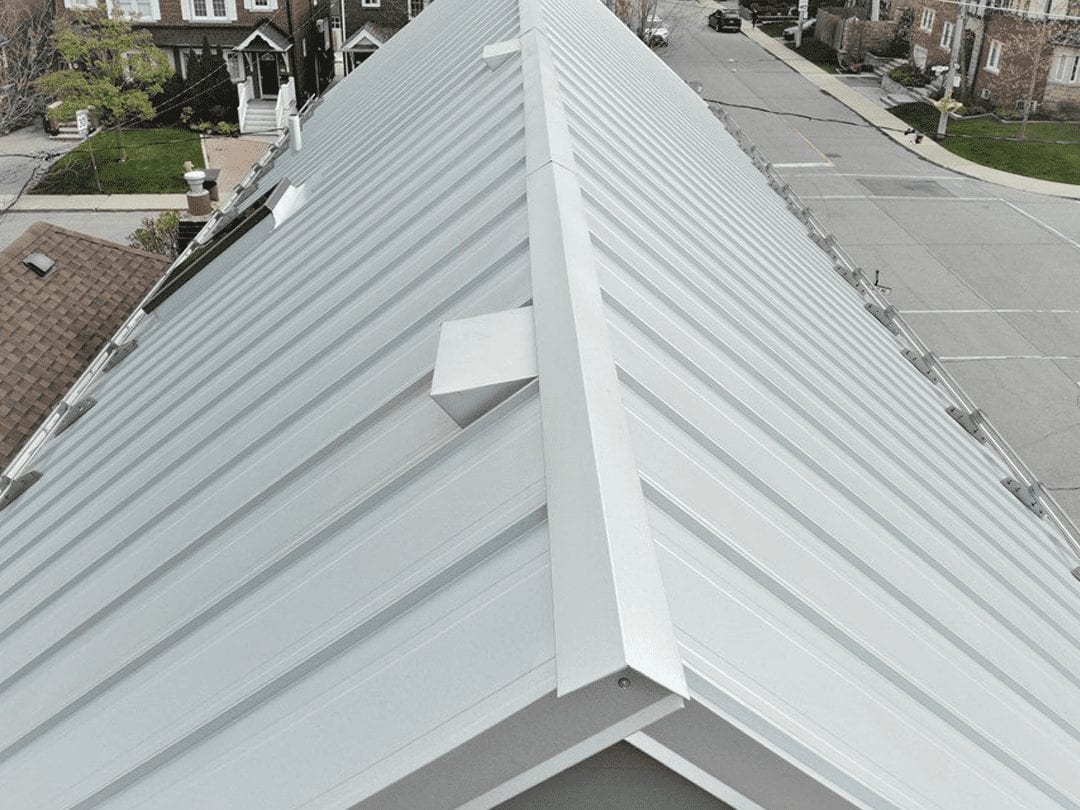
4. Curved Roof
Curved roofs have a softer and gentler appeal. Because of how they are structured, curved roofs are harder and more expensive to install. They are also quite costly to maintain. This roof type is common in beach houses or coastal homes. They also fit well on cottages, garages and stables. This novel roof design is geared towards being aesthetically pleasing rather than functional.
The curve of this roof varies according to preference. Depending on the curve of the roof, there might be a slight extension from the sidewall to the roof. This roof type typically has an entrance door on one side. They are often coated with zinc or copper.
There are several variations of curved roofs such as old Gothic, cranked ridge, Bull nose and 180-degree double vault. Some of these variations have evenly curved surfaces while others have small curved surfaces.
Advantages
This roof type has a contemporary appeal. If you re going for a unique and edgy look, then curved roofs are for you. This roof type is ideal for homeowners looking for an extra edge for their home.
This roof type is popular among developers as it is easy to construct and install. They are also relatively easy to customize to suit the owner’s unique taste. They can be modified to suit the climate and weather of the region.
Curved roofs are eco-friendly. These roofs greatly reduce Carbon(II)Oxide emissions. They also use in-plane lights which are both economical and simple to install.
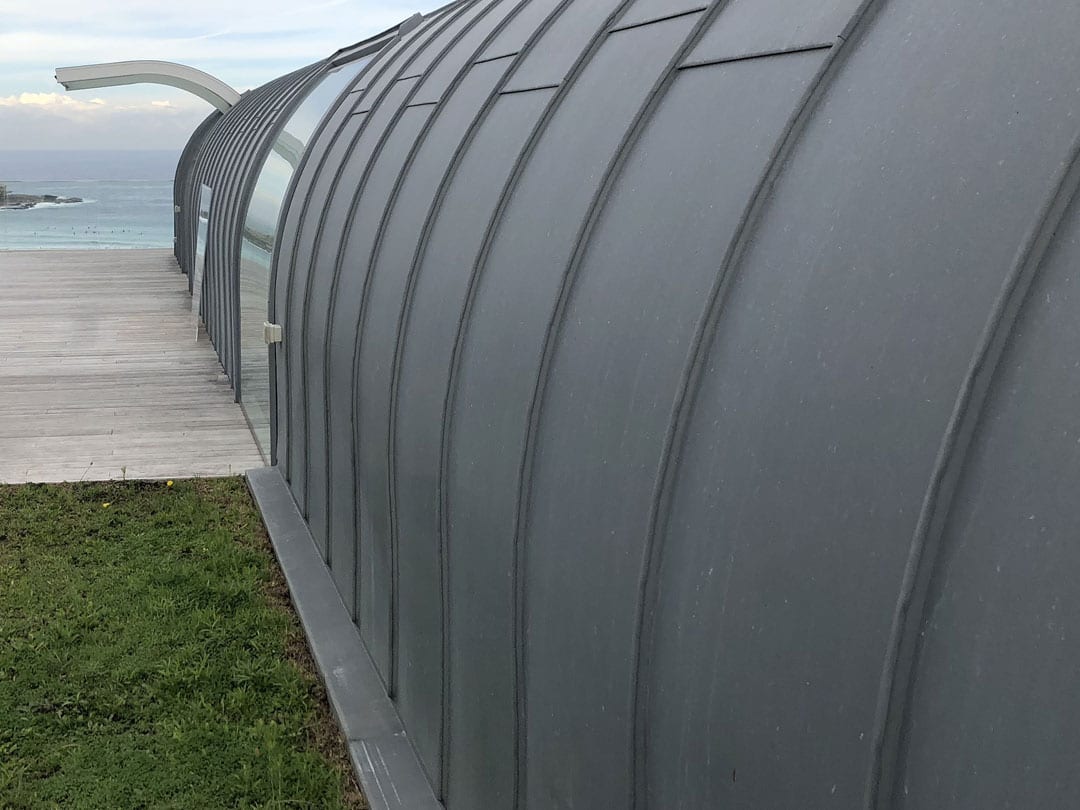
5. Gabled or Peaked Roof
This is a classic roof design. They are triangular and have a pointed peak. It is made up of two flat plates which are connected by a centre ridge. This roof type is the most affordable of all roof types. Due to its straightforward design, there are several variations of the gabled roof such as- side gable, front gable, crossed gable and Dutch gable/ gambrel.
The are a few disadvantages of gable roofs. Firstly, if not properly constructed, this roof type might collapse under extreme weather conditions such as strong wind, storms and hurricanes. Roofing tiles also have a tendency to peel off under extreme conditions. This may result in leakage and extra maintenance costs.
This roof type allows for a variety of finishings. They can be covered with asphalt shingles, terra cotta tiles, metal or concrete tiles. The angle of the roof also provides extra room which may be converted into an attic or bedroom.
Advantages
Gable roofs have numerous advantages. They are simple to construct and more affordable than most roof types. They are also easy to customize and suitable for a variety of climates. They are especially suited for regions that receive a lot of snow. The slant o the roof allows it to shed snow and water easily. This roof type allows for many variations, based on its basic design principles.
6. Hipped Roof
This is the most common type of roof. It is also referred to as hip-roof. This roof type is made up of three or more angled planes which slope downwards. These panels meet at the top to form a small ridge. It is no surprise that this roof type is particularly popular in Australia. The eaves tend to hang down and provide great shade.
This roof type is perfect for various environmental conditions ranging from very windy to very hot. They are also perfect for coastal or beach houses.
Hipped roofs are generally quite expensive. This is largely due to the extra materials required during construction. This roof type also has more seams and ridges. This drastically increases the probability of roof leakage. However, all this can be avoided through proper, regular maintenance. This eventually results in high maintenance costs which is a major disadvantage.
Advantages
The biggest benefit of hipped roofs is their shape and aesthetic. The design of the roof means that it needs minimal support from the structure. This roof type is self-bracing. The triangular panes are also perfectly suited to a variety of climates. They easily shed off snow and water, which may lead to damage.
Another advantage is that hip-roofs have great drainage. Since all sides of the roof slope downwards, water is able to naturally run off the roof. This works even better for regions susceptible to heavy snowfall which may create stress regions on the roof.
Finally, the sloping sides of the roof mean that this roof type can survive strong winds and hurricanes. Unlike gabled roofs which may be damaged by strong winds, the angled panels of hip-roofs allow the wind to roll along its surface, rather than against it.
7. Mansard Roof
The mansard roof is also known as the curb roof or French roof. This roof is a cross between a gambrel and hipped roof. This roofing style is not common in many traditional homes. It is often used in the construction of barn houses.
The mansard roof has a sloping panels on opposite sides. There are sloping panels on the last two sides two. However, unlike the gambrel, mansard roofs tend to have a row of dormer windows. These are often located along the steep bottom slope of the roof. This row of windows is unique to this roof and distinguishes the mansard roof from other roof types.
This roof type has several disadvantages. For starters, this roof type has poor weather resistance. This makes it very unsuitable for regions with adverse weather conditions. This is largely due to the low pitch of the roof. This may prove disastrous in heavy snowfall and rainfall regions.
This roof type is expensive to install and maintain. Because of the complexity of its design, this roof is difficult to install. Since this roof is quite uncommon, many roofing experts do not know how to install it. The dormer windows also significantly increase the maintenance costs of this roof.
Advantages
There are many advantages to installing a mansard roof. Firstly, this roof type creates a lot of extra ceiling room. This may be converted into an attic space for storage or into a loft. The dormer windows also bring in extra sunlight which is a huge advantage.
This roof type allows for expansion. The vertical bottom slope is flexible and makes it easy to add on extra floors. It is also very easy to expand your house when using a mansard roof.
This roof type has great aesthetic value. It looks elegant and unique and is reminiscent of the French Renaissance era.

Roof Types Materials
Another important aspect of picking out a roof is choosing the correct roof type material. Some roof materials are better suited for certain climates. You can consult an expert on the best roof material to use depending on your region and roof type.
Here are the Most Popular Roof type materials.
Rolled Roofing
These are large thin strips of made of asphalt and other minerals. They offer a fast and easy solution to roofing. They are affordable and can easily be applied using roofing nails or torches.
Built-Up Roofing
This is the best option for flat roofs or roofs with a low pitch. They are constructed using felt and asphalt and applied when hot. Then a layer of crushed stones is applied over hot tar to set it in. It is cheap and relatively easy to install.
Membrane Roofing
There are various types of membrane roofs such as PVC, polymer-modified bitumens, EPDM and Neoprene. The best membrane roofing is EPDM or rubber roofing. They tend to be similar to rolled roofing. They have a lifespan of between 20 to 35 years. They are cost effective and can be installed just as easily.
Asphalt Composite Shingles
This roofing material is made from fibreglass and topped off with mineral granules and asphalt. They are ideal for many roof types and work well in a variety of climates. They typically have a 20-30 year warranty. These materials are adaptable and can contract and expand according to the weather.
Standing Seam Metal Roofing
This is the most common roofing material. It consists of aluminium and steel panels that are raised to meet at an angle. The seams form a seal which keeps out moisture. These material have the longest lifespan. They are relatively affordable but costly when it comes to installation as they require a roofing expert with the necessary skills.
